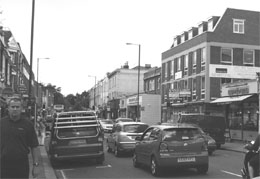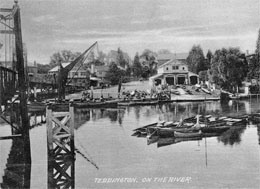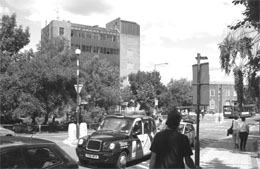Teddington - Then and Now
Wealthy people retired to Teddington in the 17th and 18th centuries.

Teddington grew very slowly over the centuries and by the time of the Enclosure in 1800 the population was still under 700. The roads existing then were Kingston Road, High Street, Waldegrave Road (then called Fry's Lane), Park Road and Shacklegate Lane as well as several short lanes and alleys. The land was mainly under cultivation with farming in the eastern end of the parish and pasture along the riverside. Teddington Common, a part of Hounslow Heath, was at the western end of the parish. It was not suitable for cultivation but the Poor collected fuel there and it may have provided some grazing.

In the 17th and 18th centuries wealthy people retired to houses in Teddington, although it did not attract the famous in the same way as Twickenham. In 1767 the Isleworth, Twickenham and Teddington turnpike road was opened; until then local roads were little more than dirt tracks increasingly unsuitable for wheeled traffic.
At the time of the Enclosure in 1800 one of the tasks was to set out the public carriage roads. Broad Street was then established as a 40 foot (12 metre) wide road. Until then it had been an ancient gravel track across Teddington Common, known as Hampton Road. There were no houses here before this time but building started shortly afterwards. The School on the north side of Broad Street opened in 1832 on land belonging to the Lord of the Manor. Stanley Road was also designated as a 40 foot (12 metre) road in 1800.

Down at the river navigation had often been difficult, but this improved after locks were built at Teddington in 1811 and Molesey in 1815. Boatbuilding became more important, particularly after 1850, when the hire of craft for fishing and leisure grew in popularity. Porter and Brice and Tom Bunn's (taken over by Tough Bros in 1928) were established near Teddington Lock. In 1869 a boatslide was added to the rollers at Teddington Lock to allow passage of small craft without having to open the lock. Several large houses on the river side of Broom Road were built in the 1850s.

In 1861 the Manor of Teddington, which consisted of nearly half the parish was put up for sale. The land was divided into plots and sold mainly to builders and speculators. This brought about the building of many new roads, such as Cambridge Road and Cambridge Crescent, which were at the heart of the old estate. At around the same time, in 1863, the railway arrived. The combination of available land and improved transport links led to an explosion in the population which more than trebled between 1861 and 1871 alone. The construction of the railway temporarily cut the village in half for over two years while the massive mound bridging the line was formed. The present Causeway, then called Wolsey Road, was built at this time to link to Park Road and thence to Kingston while the passage of traffic between Broad Street and High Street was interrupted.

Teddington was set up as a Local Board in 1867, becoming an Urban District Council in 1895. These changes resulted in improved facilities, including a cemetery in Shacklegate Lane (1879) and a recreation ground in Manor Road (1881). The Council also purchased Elmfield House and used it for meetings and Council Offices. It has now been sold.
The Teddington and Hampton Wick Memorial Hospital opened in 1875 in Elfin Grove and was replaced by the Teddington Memorial Hospital in 1929. Much fundraising took place, including “Hospital Sunday” and various carnivals and fetes. Fundraising continues to this day to provide extra facilities at the hospital. The first picture house was the Elmfield, near Elmfield House, which opened in 1900. Later the Savoy was built on the same site and was demolished in 1937 when a new Savoy was built (see above).

Institutions of national and international repute set up as employers in Teddington. The National Physical Laboratory (NPL) moved to Bushy House in 1900. Film making (then Ec-Ko Films and still TV studios to this day) were established in Broom Road in 1900. The Paint Research Association moved into premises in Waldegrave Road in 1926 to establish what was to become one of the world's major coatings research units, although it has now closed.
There was a level crossing at Bushy Park Road, seen here at the Sandy Lane end. On the right of the top picture is the old signal box house. The crossing closed in the late 1950s and vehicular traffic was forced to divert to Vicarage Road, Hampton Wick or along Church Grove to Kingston Bridge. Out of the bottom picture, to the left, there is now a pedestrian footbridge which replaced the crossing.



